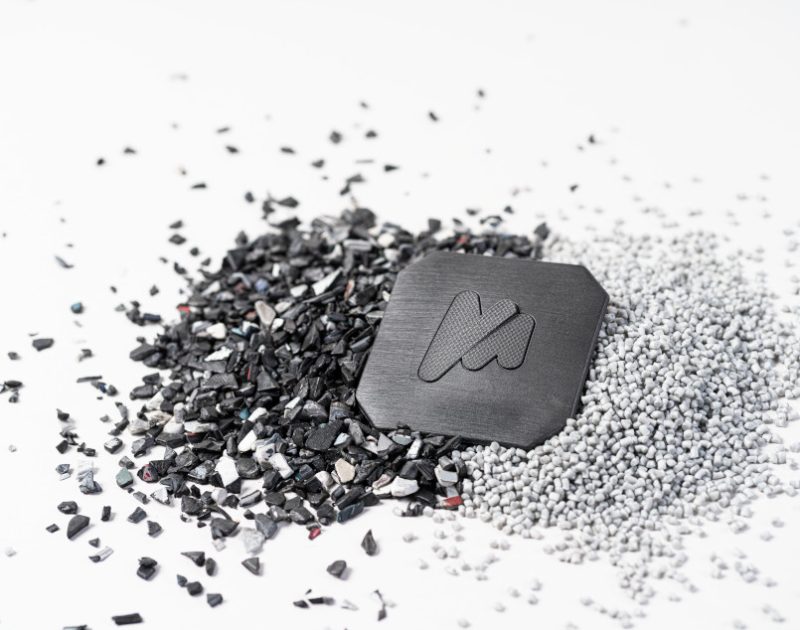

Applications This solution was designed especially for airbag covers, but we’re already looking at how…
Thermoplastic Elastomer (TPE) compound for airbag covers – low environmental impact, high performance and full integration with NAFILean carriers.
7% lighter vs. PP GF airbag concepts
20% less CO2 vs. PP GF (Glass-Fiber Reinforced Polypropylene) airbag concepts
100% recyclable – Fully validated and in serial production

Applications This solution was designed especially for airbag covers, but we’re already looking at how…
IniFlex is our breakthrough TPE material engineered for airbag cover applications. There is currently no equivalent with such a low weight and carbon footprint that also delivers the mechanical reliability needed for safety-critical components.
Targeting a very specific use case (airbag covers), this tailored solution has already been fully validated and is being showcased in vehicles. Fully recyclable, IniFlex contributes to slashing Scope 3 emissions, without compromising performance.

Generating 20% less CO2 emissions and 7% lighter than PP GF airbag concepts, IniFlex clocks up carbon savings at part level. As a 100% recyclable material, it also simplifies end-of-life strategies and supports closed-loop ambitions. What’s more, this mono-material approach makes disassembly and recovery more efficient – a clear advantage as circular economy regulations tighten.
We developed IniFlex with system integration in mind. It’s 100% compatible with our NAFILean structural carriers for a high-performance, mono-material airbag module concept. This further reduces environmental impact AND complexity in design and manufacturing.
Drawing on our polymer expertise, IniFlex combines optimal processability with industrial robustness. It’s engineered for scalable injection moulding, making it a reliable scalable solution for automotive mass production.

We’re really excited about the possibilities offered by IniFlex, which represents a new benchmark for functional TPE in demanding automotive applications – and, further down the line, hopefully in other industries too. By enabling OEMs to address Scope 3 emissions while enhancing performance, it marks a giant step forward in transforming interior components.